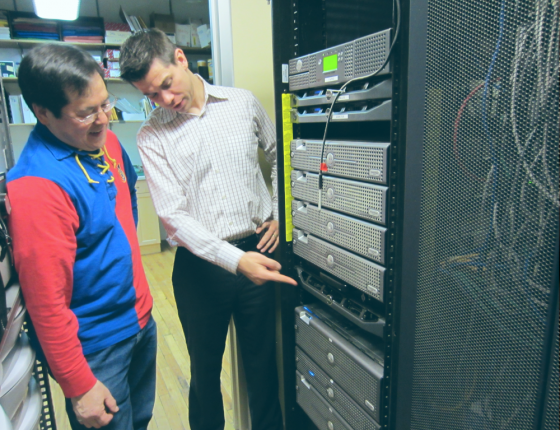Objective
Slipstream and the Center for Energy and Environment (CEE) collected information from Wisconsin business owners about characteristics of their business and small embedded data centers (SEDCs) — information that helped Focus on Energy address savings opportunities from SEDCs by identifying appropriate program offerings and marketing channels. The study performed a literature review, stakeholder survey, savings quantification, investigation of new market channels, and follow-up field work.
Methodology
The characterization study was composed of both primary and secondary research. The team reviewed relevant studies, interviewed Focus on Energy program staff and IT equipment distributors, surveyed a sample of Wisconsin businesses, and conducted a limited number of SEDC site visits. Survey results and data from the literature review were used to quantify energy savings potential from measures targeting SEDCs. Results from site visits clarified effective approaches to help the organization with reaching its target market. The characterization study worked to provide answers to the following questions:
- What are the most typical configurations, management, and size of EDCs in Wisconsin?
- How much potential is there for energy savings through the Focus on Energy program as applied to EDCs, and where does that potential lie?
- How do those areas differ from large data centers?
- What are the best outreach channels for reaching and eventually impacting these facilities?
- What program design practices are the best for driving program impact in Wisconsin?
Results
Survey findings indicate that Wisconsin has a large number of businesses with SEDCs (approximately 1,600 commercial buildings), resulting in an annual energy consumption of approximately 98 GWh. The majority of SEDCs are in offices, manufacturing, and education. Most SEDCs have dedicated cooling. Current practices offer the opportunity for energy savings through IT equipment and cooling measures.
Focus on Energy Recommendations
Focus on Energy can achieve energy savings by targeting SEDCs that fulfill the minimum requirements that benefit most from a defined set of effective IT and cooling measures. To assuage IT staff concerns, emphasis should be placed on measures that require minimal non-mission critical capital expenditure without downtime of IT services.
IT measures:
- UPS Utilization: Increase UPS utilization to 75-80% through UPS consolidation.
- Server Consolidation: Identify dormant (comatose) servers and turn them off if access to those servers is no longer required. Reduce the number of physical hosts by employing server virtualization. Reduce the servers by moving those IT services to the cloud (typically email, file, and database servers).
- ENERGY STAR Equipment: Purchase ENERGY STAR-certified IT equipment when refreshing.
- Storage Reduction: Move storage to cloud services. Archive unused storage onto tape drives and power down unneeded disk drives.
Project Summary
Objective
- Characterized embedded data centers (EDCs) used by Wisconsin customers in the commercial and institutional markets.
- Investigated the potential for improved energy efficiency in the data centers.
- Identified new channels for achieving successful implementation by engaging IT staff, rather than traditional methods that target facility managers or business managers.
- Established best practices for incorporating specific offerings in existing business programs.
Non-energy benefits
- This project contributed to improved energy savings for Focus on Energy's non-residential programs.
- Optimization of offerings and technical assistance also helped customers and trades with decision making related to this segment of the market.
Related Report
